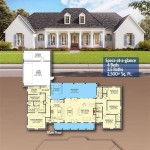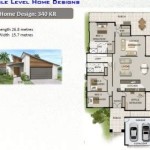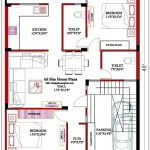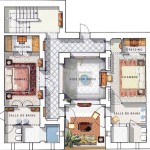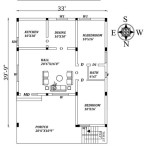Finding the Perfect Blueprint: A Guide to Just Home Plans
Building a dream home often begins with finding the perfect blueprint. Just home plans, or house plans, are pre-designed architectural drawings that provide a detailed roadmap for constructing a residence. These plans are essential for contractors, builders, and homeowners, offering a clear vision of the final structure and ensuring efficient project execution.
Key Considerations When Choosing Home Plans
Selecting the right home plan is a crucial step in the home-building process. Several factors warrant careful consideration to ensure the chosen design aligns with individual needs and preferences.
Lot Size and Orientation: The size and orientation of the building lot significantly influence the suitability of a house plan. A narrow lot may necessitate a different design than a wider, deeper lot. The lot's orientation to the sun also affects natural light and energy efficiency, impacting design choices.
Lifestyle and Needs: Individual lifestyles and specific needs should dictate the choice of a home plan. Families with children might require multiple bedrooms and play areas, while empty nesters might prefer single-story living with accessible features. Consideration of future needs, such as potential expansions or changes in family dynamics, is also important.
Budget: Construction costs are a primary concern. Establishing a realistic budget before selecting a home plan is crucial. The size and complexity of the design directly impact material and labor costs. Choosing a plan that aligns with the budget helps avoid overspending and financial strain.
Architectural Style: Home plans come in a wide array of architectural styles, from traditional to contemporary. Consider personal aesthetics and the surrounding neighborhood when choosing a style. Factors such as rooflines, window designs, and exterior finishes contribute to the overall architectural character of the home.
Understanding the Components of a Home Plan
A comprehensive home plan consists of several key components, each providing specific information necessary for construction.
Floor Plans: These drawings provide a bird's-eye view of each floor, showing room layouts, dimensions, door and window placements, and traffic flow. Floor plans are essential for visualizing the interior space and determining the functionality of the design.
Elevations: Elevations depict the exterior views of the house from different sides, illustrating the exterior finishes, rooflines, and overall aesthetic. They provide a clear picture of how the finished house will look from the outside.
Sections: Section drawings offer a cutaway view of the house, revealing the internal structure, including wall heights, framing details, and roof construction. These are essential for understanding the construction process and ensuring structural integrity.
Foundation Plan: This plan details the layout and dimensions of the foundation, indicating the type of foundation required and its specific structural components. This is a critical element for ensuring the stability of the entire structure.
Working with Home Plan Providers
Finding the right home plan provider is essential for a smooth and successful building process. There are various resources available for obtaining house plans.
Online Plan Databases: Numerous websites offer extensive collections of pre-designed house plans. These databases allow users to search by size, style, features, and budget, providing a convenient way to explore various options.
Architects and Designers: For custom home designs, architects and designers can create personalized plans tailored to specific needs and preferences. Working with a professional ensures a unique and fully customized home that meets individual requirements.
Stock Plan Modifications: Many pre-designed home plans can be modified to suit individual needs. Working with a drafter or architect, minor adjustments can be made to existing plans to personalize the layout or features.
Evaluating Home Plan Quality
Before purchasing or using a home plan, it's essential to evaluate its quality and completeness.
Clear and Detailed Drawings: High-quality plans should include clear and detailed drawings with accurate dimensions and specifications. Easy-to-understand drawings are essential for accurate construction and minimize potential errors.
Comprehensive Information: The plan should include all necessary information, including floor plans, elevations, sections, foundation plans, and material specifications. Complete information ensures that the builders have all the necessary details for accurate construction.
Code Compliance: Ensure the home plan complies with local building codes and regulations. Adherence to codes is critical for obtaining building permits and ensuring the safety and structural integrity of the home.
Benefits of Using Pre-Designed Home Plans
Utilizing pre-designed home plans offers several advantages:
Cost-Effectiveness: Pre-designed plans are typically less expensive than custom designs, saving money on architectural fees. The fixed cost structure allows for better budget planning and control.
Time Savings: Choosing a pre-designed plan significantly reduces the time required for the design phase, allowing for quicker project commencement. The readily available plans expedite the building process.
Wide Selection: Online databases and plan providers offer a vast selection of home plans in various styles, sizes, and configurations, providing a broad range of options to choose from.
Legal Considerations with Home Plans
Understanding the legal aspects related to home plans is essential.
Copyright and Usage Rights: Purchased home plans are typically subject to copyright restrictions, which may limit the number of times the plan can be used. Understanding the usage rights is crucial for avoiding legal issues.
Building Permits: Obtaining the necessary building permits is a legal requirement before construction can begin. Home plans are typically submitted to local authorities as part of the permit application process.
Making Informed Decisions about Home Plans
Choosing the right home plan requires careful consideration of various factors, from budget and lifestyle to architectural style and lot size. Thoroughly researching available options, understanding plan components, and working with reputable providers are crucial steps in the process. Making informed decisions based on individual needs and preferences ensures the realization of a dream home that meets both functional and aesthetic desires.

Traditional Style House Plan 4 Beds Baths 3388 Sq Ft 36 234 Building Plans Farmhouse Country

3 Reasons To Build A 1 Bedroom House Plan

Small House Oz5 Plans

Country House Plan With 3 Bedrooms And 2 5 Baths 7028
House Plan Of The Week Narrow And Versatile Builder

One Story 3 Bed Craftsman Home Plan Just Under 2 000 Square Feet 62350dj Architectural Designs House Plans

Charming New Home On A Narrow Infill Lot

Modern Rustic Ranch Home Plan Just Under 1500 Square Feet 51906hz Architectural Designs House Plans
:max_bytes(150000):strip_icc()/sparta_0_0_0-d60217d2c379489398f52916b81e268c.jpg?strip=all)
40 Small House Plans That Are Just The Right Size

New Home Design Trends For 2024 The House Designers


